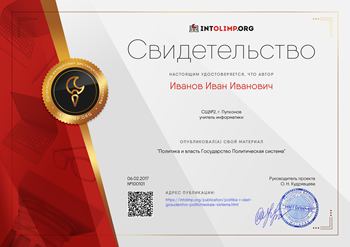The Beatles
LIST OF CONTENTS
1. The Beatles…………………………………….
2. History…………………………………………
3. Growth and Controversy……………………….
4. The Change of Rock n Roll……………………
5. The Long Winding Road Down……………….
6. Last Works…………………………………..
7. The End of an Era…………………………….
8. EXTRA……………………………………….
1. THE BEATLES
The Beatles were an English rock band formed in Liverpool in 1960. With members John Lennon, Paul McCartney, George Harrison and Ringo Starr, they became regarded as the foremost and most influential music band in history. Rooted in skiffle, beat and 1950s rock and roll, the group were integral to pop music's evolution into an art form and to the development of the counterculture of the 1960s. They often incorporated classical elements, older pop forms and unconventional recording techniques in innovative ways, and later experimented with several musical styles ranging from pop ballads and Indian music to psychedelia and hard rock. As the members continued to draw influences from a variety of cultural sources, their musical and lyrical sophistication grew, and they were seen as an embodiment of the era's sociocultural movements.
Led by primary songwriters Lennon and McCartney, the Beatles built their reputation playing clubs in Liverpool and Hamburg over a three-year period from 1960, with Stuart Sutcliffe initially serving as bass player. The core trio of Lennon, McCartney and Harrison, together since 1958, went through a succession of drummers, including Pete Best, before asking Starr to join them in 1962. Manager Brian Epstein moulded them into a professional act, and producer George Martin guided and developed their recordings, greatly expanding the group's homeland success after their first hit, "Love Me Do", in late 1962. As their popularity grew into the intense fan frenzy dubbed "Beatlemania", they acquired the nickname "the Fab Four", with Epstein, Martin, and other members of the band's entourage sometimes given the informal title of "fifth Beatle".
By early 1964, the Beatles were international stars, leading the "British Invasion" of the United States pop market and breaking numerous sales records. They soon made their motion picture debut with the mock-documentary A Hard Day's Night (1964). From 1965 onwards, they produced increasingly innovative recordings, including the albums Rubber Soul (1965), Revolver (1966), Sgt. Pepper's Lonely Hearts Club Band (1967), The Beatles (also known as the "White Album", 1968) and Abbey Road (1969). In 1968, they founded Apple Corps, a multi-armed multimedia corporation that remains active. After disbanding in 1970, the four members each enjoyed success as solo artists. Lennon was shot and killed in December 1980, and Harrison died of lung cancer in November 2001. McCartney and Starr remain musically active.
The Beatles are the best-selling band in history, with estimated sales of over 800 million records worldwide. They are the best-selling music artists in the United States, with 178 million certified units. The group was inducted into the Rock and Roll Hall of Fame in 1988, and all four main members were inducted individually from 1994 to 2015. They have also had more number-one albums on the British charts and sold more singles in the UK than any other act. In 2008, the group topped Billboard magazine's list of the all-time most successful artists; as of 2017, they hold the record for most number-one hits on the Hot 100 chart with twenty. They have received seven Grammy Awards, an Academy Award for Best Original Song Score and fifteen Ivor Novello Awards. They were also collectively included in Time magazine's compilation of the twentieth century's 100 most influential people.
2. HISTORY
1957-1962: FORMATION, HAMBURG, AND UK POPULARITY
In March 1957, John Lennon, then aged sixteen, formed a skiffle group with several friends from Quarry Bank High School in Liverpool. They briefly called themselves the Blackjacks, before changing their name to the Quarrymen after discovering that a respected local group was already using the other name. Fifteen-year-old Paul McCartney joined them as a rhythm guitarist shortly after he and Lennon met that July. In February 1958, McCartney invited his friend George Harrison to watch the band. The fifteen-year-old auditioned for Lennon, impressing him with his playing, but Lennon initially thought Harrison was too young for the band. After a month of Harrison's persistence, during a second meeting (arranged by McCartney), he performed the lead guitar part of the instrumental song "Raunchy" on the upper deck of a Liverpool bus, and they enlisted him as their lead guitarist.
By January 1959, Lennon's Quarry Bank friends had left the group, and he began his studies at the Liverpool College of Art. The three guitarists, billing themselves at least three times as Johnny and the Moondogs, were playing rock and roll whenever they could find a drummer.Lennon's art school friend Stuart Sutcliffe, who had just sold one of his paintings and was persuaded to purchase a bass guitar, joined in January 1960, and it was he who suggested changing the band's name to Beatals, as a tribute to Buddy Holly and the Crickets. They used this name until May, when they became the Silver Beetles, before undertaking a brief tour of Scotland as the backing group for pop singer and fellow Liverpudlian Johnny Gentle. By early July, they had refashioned themselves as the Silver Beatles, and by the middle of August shortened the name to The Beatles.
Allan Williams, the Beatles' unofficial manager, arranged a residency for them in Hamburg, but lacking a full-time drummer they auditioned and hired Pete Best in mid-August 1960. The band, now a five-piece, left four days later, contracted to club owner Bruno Koschmider for what would be a 31⁄2-month residency. Beatles historian Mark Lewisohn writes: "They pulled into Hamburg at dusk on 17 August, the time when the red-light area comes to life ... flashing neon lights screamed out the various entertainment on offer, while scantily clad women sat unabashed in shop windows waiting for business opportunities."
Koschmider had converted a couple of strip clubs in the district into music venues, and he initially placed the Beatles at the Indra Club. After closing Indra due to noise complaints, he moved them tothe Kaiserkeller in October. When he learned they had been performing at the rival Top Ten Club in breach of their contract, he gave the band one month's termination notice, and reported the underage Harrison, who had obtained permission to stay in Hamburg by lying to the German authorities about his age. The authorities arranged for Harrison's deportation in late November. One week later, Koschmider had McCartney and Best arrested for arson after they set fire to a condom in a concrete corridor; the authorities deported them. Lennon returned to Liverpool in early December, while Sutcliffe remained in Hamburg until late February with his German fiancée Astrid Kirchherr, who took the first semi-professional photos of the Beatles.
During the next two years, the Beatles were resident for periods in Hamburg, where they used Preludin both recreationally and to maintain their energy through all-night performances. In 1961, during their second Hamburg engagement, Kirchherr cut Sutcliffe's hair in the "exi" (existentialist) style, later adopted by the other Beatles. When Sutcliffe decided to leave the band early that year and resume his art studies in Germany, McCartney took up the bass. Producer Bert Kaempfert contracted what was now a four-piece group until June 1962, and he used them as Tony Sheridan's backing band on a series of recordings for Polydor Records. As part of the sessions, the Beatles were signed to Polydor for one year. Credited to "Tony Sheridan & the Beat Brothers", the single "My Bonnie", recorded in June 1961 and released four months later, reached number 32 on the Musikmarkt chart.
3. GROWTH AND CONTROVERSY
The Beatles' 1965 and 1966 albums Rubber Soul and Revolver marked a turning point in the band's recording history. The most original of their collections to date, both combined Eastern, country-western, soul, and classical motifs with trend-setting covers, breaking any mold that seemed to define "rock and roll." In both albums balladry (songs that tell stories), classical instrumentation, and new structure resulted in brilliant new concepts. Songs such as "Tomorrow Never Knows," "Eleanor Rigby," and the lyrical "Norwegian Wood" made use of sophisticated (subtle and complex) recording techniques. This was the beginning of the end for the group's touring, since live performances of such songs were technically impossible at the time.
The Beatles became further distanced from their fans, when, in an interview with a London Evening Standard writer, Lennon said, "We're more popular than Jesus Christ now." Later Lennon said he was misunderstood. Some American teenagers took Lennon's words literally, however. They burned Beatles' albums, and the group finished their last U.S. tour amid riots and death threats.
4. THE CHANGE OF ROCK AND ROLL
Acclaimed by critics, with advance sales of more than one million, the Beatles' Sgt. Pepper's Lonely Hearts Club Band (1967) was perhaps the high point of their recording career. It was not simply a "collection" of Lennon-McCartney and Harrison originals. Presented in a stunning and evocative album package, it was thematically (everything related to one idea) whole and artistically pleasing. Most critics believe it will remain timeless. It contains imaginative melodies and songs about many life experiences, philosophy, and unusual imagery. The Beatles' music had evolved from catchy love songs to profound ballads and social commentary. Trying new things seemed to be an essential part of the Beatles' lives. Influenced greatly by Harrison's interest in India, the Beatles visited the Maharishi Mahesh Yogi in India.
5. THE LONG WINDING ROAD DOWN
The Beatles' next cooperative project was the scripting and directing of another film, Magical Mystery Tour (1967) for the British Broadcasting Company (BBC). It was an unrehearsed, unorganized failure. Intended to be fresh, it drew criticism as a compilation of adolescent humor, gag bits, and undisciplined boredom. The accompanying album, however, featured polished studio numbers such as McCartney's "Fool on the Hill" and Lennon's "I Am the Walrus," as well as "Penny Lane," "Hello Goodbye," and "Strawberry Fields Forever," which were not included in the film.
Growing differences between artistic approaches pointed to the Beatles breaking up. In 1968 they recorded a two-record set, simply called The Beatles. It was the first album released by the group's new record company, Apple. The White Album, as it was commonly known, had a variety of songs that had no connection to each other and, some felt, that were often difficult to understand. There particularly appeared to be a growing break between Lennon and McCartney. McCartney contributed ballads like "Blackbird," while Lennon gave antiwar statements like "Revolution" and made fun of the Maharishi. Harrison, on the other hand, shone in "While My Guitar Gently Weeps," aided by Eric Clapton's tasteful guitar solo. For the first time Starr was allotted the space for an original, the country-western "Don't Pass Me By," which became a number-one hit in Scandinavia (northern Europe), where it was released as a single.
The Beatles' animated feature film Yellow Submarine was released in July 1968. A fantasy about the Beatles battling against the Blue Meanies, the film was visually pleasing, but did not make much money when it was first released.
The remainder of 1968 and 1969 saw the individual Beatles continuing to work apart. Starr appeared in the film The Magic Christian. Lennon performed live outside the Beatles in a group called the Plastic Ono Band with his wife Yoko Ono (1933–).
6. LAST WORKS
The Beatles spent months filming and recording for Let It Be. It was supposed to be a film of how the group worked together. It ended up as a film showing the group falling apart. Editing would have made release before 1970 impossible, so the project was put on hold. Instead, for the final time, the Beatles gathered to produce an album "the way we used to do it," as McCartney was quoted in Philip Norman's book, Shout! The result was as stunning as Sgt. Pepper had been. All their problems seemed to vanish on the album Abbey Road (1969). The Beatles were at their best. The album contained such classics as "Come Together," "Golden Slumbers," "Octopus's Garden," and Harrison's "Here Comes the Sun" and "Some-thing," which Lennon hailed the best track on the album. They won yet another Grammy Award.
American producer Phil Spector (1940–) took over the Beatles' Let It Be project in 1970. The resulting film and album, released in 1971, got mixed reviews. Band members were seen quarreling and unresponsive to McCartney's attempts to raise morale (spirit). By the end of 1970 all four Beatles had recorded solo albums. In 1971 McCartney sued to legally end the group. Throughout the 1970s promoters attempted to reunite them without success.
7. THE END OF AN ERA
Mark David Chapman murdered John Lennon on December 8, 1980, in New York City, New York. In the mid-1990s, however, new music was released under the original band name. The remaining Beatles played over songs Lennon had left on tape. The singles "Free as a Bird" and "Real Love" were released as parts of anthologies featuring material from earlier Beatles recording sessions.
George Harrison died on November 29, 2001, in Los Angeles, California, of brain cancer. Both Paul McCartney and Ringo Starr continue to record. The Beatles were a major influence not only in rock and roll but also in the creation of modern popular music. The Beatles were inducted into the Rock and Roll Hall of Fame in 1988. Lennon and McCartney have also been inducted as solo performers.
8. EXTRA
Selected filmography
Main article: The Beatles in film
Fictionalised, starring the Beatles
A Hard Day'sNight (1964)
Help! (1965)
Magical Mystery Tour (1967)
Yellow Submarine (1968) (animation, includes brief cameo)
Documentaries
The Beatles at Shea Stadium (1966)
LetItBe (1970)
TheCompleatBeatles (1982)
It Was Twenty Years Ago Today (1987) (about Sgt. Pepper)
TheBeatlesAnthology (1995)
The Beatles: Eight Days a Week (2016) (about Beatlemania and touring years)
Concert tours
Main article: List of the Beatles' live performances
1963
1963 UK tours (winter–autumn)
The Beatles Winter 1963 Helen Shapiro Tour
Spring 1963 Tommy Roe/Chris Montez UK tour
RoyOrbison/TheBeatlesTour
Autumn 1963 Swedentour
1964
Winter 1964 NorthAmericantour
Spring 1964 UK tour
TheBeatles' 1964 worldtour
1965
TheBeatles' 1965 Europeantour
TheBeatles' 1965 US tour
TheBeatles' 1965 UK tour
1966
The Beatles' 1966 tour of Germany, Japan and the Philippines
TheBeatles' 1966 US tour







